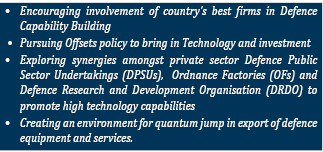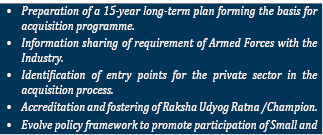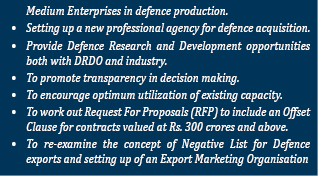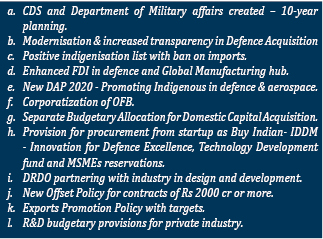
Articles
Defence Reforms An Overview – Status and Way Ahead
Sub Title : Recalling the chain of events in this journey and a status check of where we stand on military acquisition reforms
Issues Details : Vol 18 Issue 4 Sep – Oct 2024
Author : Lt Gen Sanjay Verma, PVSM, AVSM, VSM**
Page No. : 58
Category : Military Affairs
: October 8, 2024
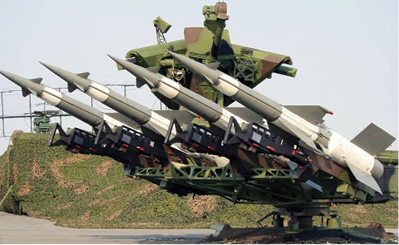
Background
PM gives a clarion call for Atmanirbhar Bharath” announcement on 12 May 2020 by the Prime Minister’s office marks an era of beginning of self-reliance in the Indian defence eco-system landscape. There is no doubt that this will be etched as a turning moment in the journey of Indian Defence Forces when looked at in retrospect at the end of the decade and beyond. It is definitely going to be an exciting period marked with a decisive and calibrated approach towards defence self-reliance by shaping policies, procedures, organisations and setting the stage for a unique synergy between the Government, Private industry, Public Sector, MSMEs, Start Ups and Academia.
As we approach the five years milestone in 2025 a review of the status of reforms and way ahead through some major markers will indicate the trajectory and proposed direction. There is no denying that the reforms are transformational, bold and reflect the determination of the government to be self-reliant. It is only with a perspective of what more needs to be augmented that this review is intended at a macro level. This is significant in view of the fact that this intent of being self-reliant shaped the policies through Independence and decades beyond albeit under a regulated and public sector-oriented approach. The dependence on Russian inventory during the journey was a fall out of the geo-political environment and immediate need to address the prevailing security concerns. It indeed was a wakeup call wherein GoM reviewing National Security (2001) commented on-
Connecting The Dots
While the KRC report ushered in a structured and institutional approach to defence capability building by way of bringing out full time NSA, the DIA etc besides a first ever comprehensive Defence Procurement Procedure 2002 and establishing of the Defence Acquisition Wing and this did set the path for a planned defence acquisition. However, appreciating the seriousness and criticality the issue warranted, another committee namely the Kelkar Committee was set up by the Government to examine and recommend changes in the acquisition procedures. The focus of the Kelkar Committees proposals at that time and main recommendations are something which need to be brought in to fore to review the reforms of the present time and also to mirror any similarities and factor in corrective measures which restricted those recommendations to bring in the change or direction now being sought. The focus of the Kelkar committee was on: –
The main recommendations were: –
Status
There have been more committees set up subsequently but comprehensively Kelkar Committee covered a lot of ground. However, the recommendations did not get the traction they deserved and nor did any stakeholder take it up in a manner it should have been till the Government intervention in 2020. It will be therefore revealing to map the recommendations to the current scenario and gauge the sense of the intent. A recap of the significant present-day reforms rolled out in 2020 and beyond are listed under and will help in relating to the 2005 recommendations: –
There has been a positive enthusiasm and environment created to take all stakeholders in this journey together and if one looks at the MoD year-end review 2023, the major achievements include:-
Way Ahead
The outcome in recent times reflects an unprecedented frenzy of activities which includes seminars, development announcements, outreach to academia and industry, slew of MoUs, joint ventures and collaborations and an euphoria which seems to be a bit pre-mature and needs to be pragmatically appreciated. Does it really mean that within four years of announcing of the reforms it has propelled us to become a power house of indigenous defence production capability building, as also a leading exporter and self-reliant with solutions for anything the defence services aspire for? There is some progress but it just needs as they say a bit of reading between the lines or the fine print to trace out the linkage to a foreign lineage for elementary to complex platforms being offered.
Where do we stand on Strategic Partnership Models, what is success rate of Make I or II? Have we invested in R&D, do we have a strategy for platform development in sync with plans or threat appreciation and more importantly aligned to theatre concept? Defence capability does not translate out of policies, procedures and announcements alone but needs commitment and sustained R&D by all stakeholders and a long-term vision and planning aligned to the National Security Strategy doctrine. At the ground level the reaction is mixed with the opening up the defence sector to private industry and a few success stories in the form of Emergency Procurements raising the expectations. However, for the defence industry to stand tall on its own with realisations of several big-ticket projects be it Land, Aerospace or Maritime Systems, it will be not before 2030 and beyond. Towards that end a lot more needs to be done or else the sustainment of these reforms will be difficult leave alone addressing the need to expedite the indigenisation efforts. It is imperative that certain more steps be taken to reinforce the efforts and take it to logical fruition. Certain recommendations:
- Investment In Research & Development – India stands at 53rd place in the world in Gross Expenditure on R&D as a Nation with just 0.7% of GDP. This needs to be augmented and a National Mission be undertaken to IDENTIFY TECHNOLOGY VOIDS including Defence Requirements. The expenditure on R&D by private sector/PSUs is negligible. In countries like France, US, South Korea, China, Israel etc the expenditure on R&D by private sector is more than 60-70% whilst in India as much as 70% is by Government including all sectors. There is promise as the Prime Minister said on 3rd March 2021, while addressing a webinar on the effective implementation of Union Budget 2021 provisions, “National Research Foundation is being built for the first time in the country. 50 thousand crore rupees have been allocated for this. This will strengthen the governance structure of the research-related institutions and will improve linkages between R&D, academia, and industry”.
- Strategy For Atmanirbharta – A well-defined strategy for Defence Forces to become Atmanirbhar. A long list of Positive Indigenisation has been put in public domain. A product/platform/weapon strategy should be defined as to which sector can take these on – Private Industry or PSU or DRDO led development a la Rakshaa Udyog Ratan /Champion model from Kelkar Committee and also being advocated now. This will provide transparency and clarity to all stakeholders and avoid multiplicity of efforts besides realising a quick solution.
- Professional Organisation For Acquisition – The acquisition is diffused with no accountability or responsibility resulting in delays in decision making. There are multiple stakeholders. The process requires knowledge of operations, technical, legal, financial, commercial etc and hence a Cross Functional Team headed by a CEO equivalent designation who is accountable from processes to outcomes in defined timelines. US Army Futures Command is also a viable model.
- Realistic Plans And Ownership Of Projects – The requirements have to be aligned with the National Security Strategy in turn with the Integrated Capability Development Plan and the rightful ownership of these projects needs to be defined or else the capability development will be mired in a maze as has been the trend.
- Integrated Platform Development – Family Approach- The Integrated Guided Missile Development Project has been a success. On similar lines Integrated approach for Air Defence Systems, Mechanised platforms, Artillery Guns etc should be initiated rather than standalone RFPs. This will lead to spiral development, scalable options, commonality of inventory and technology leading to operational and sustenance efficiencies. Modular plug and play for technologies across the spectrum are a harsh reality. Drones be it weaponised, surveillance, logistics or any other are a simple example to be populated vide this approach rather than piecemeal acquisitions which has its own pitfalls. Larger platforms have critical commonality and hence development needs to be integrated.
- Indigeneous Content – Cost Or Technology- The indigenous content in acquisition should define technologies and not cost alone as cost can be made up resulting in technologies being not indigenous and defeating the very purpose of moving away from dependencies.
- Theater Specific And Integrated QRs – Important for Indian Army, this aspect needs serious consideration as the diverse operational environments need stringent requirements and hence should be theatre specific where possible. The cost and time penalty being incurred in development of platforms on a single QR is already evident in a number of developmental projects. Further QRs should be broad based and integrated for wider applications. Communication systems, sighting systems, surveillance systems, power packs are examples where QRs should be so developed that instead of a platform centric utility they should find easy adaptability across multiple platforms.
- JVs/Collaborations On Equal Terms – There will be a need to get into JVs and collaborations but it has to be zon equal terms wherein our interests are safeguarded and technology denial is not built-in. Temptations for quick solutions will have to be set aside and backend involvement of our academia and R&D may be imperative cutting across the commercial angle in the deals.
In Summation
To summarize, the present decade offers excellent opportunity for the Defence Industry to propel India as a global player. There is a clear spelling out of the purpose and a never seen before alignment amongst stakeholders be it Government, Defence Forces, Industry, Academia as also global Defence Industry. The need is of a calibrated and patient follow up with time-based evaluations and corrections. Programme based approach on the lines of US Army Futures Command should be emulated. Velocity rather than speed will be relevant as direction is more important. In a quest for speed critical technologies, cost, quality, sustenance and such matters get compromised the impact of which will be evident down the years. Hence in the continuum of reforms the relevant recommendations should be taken note of and factored.



